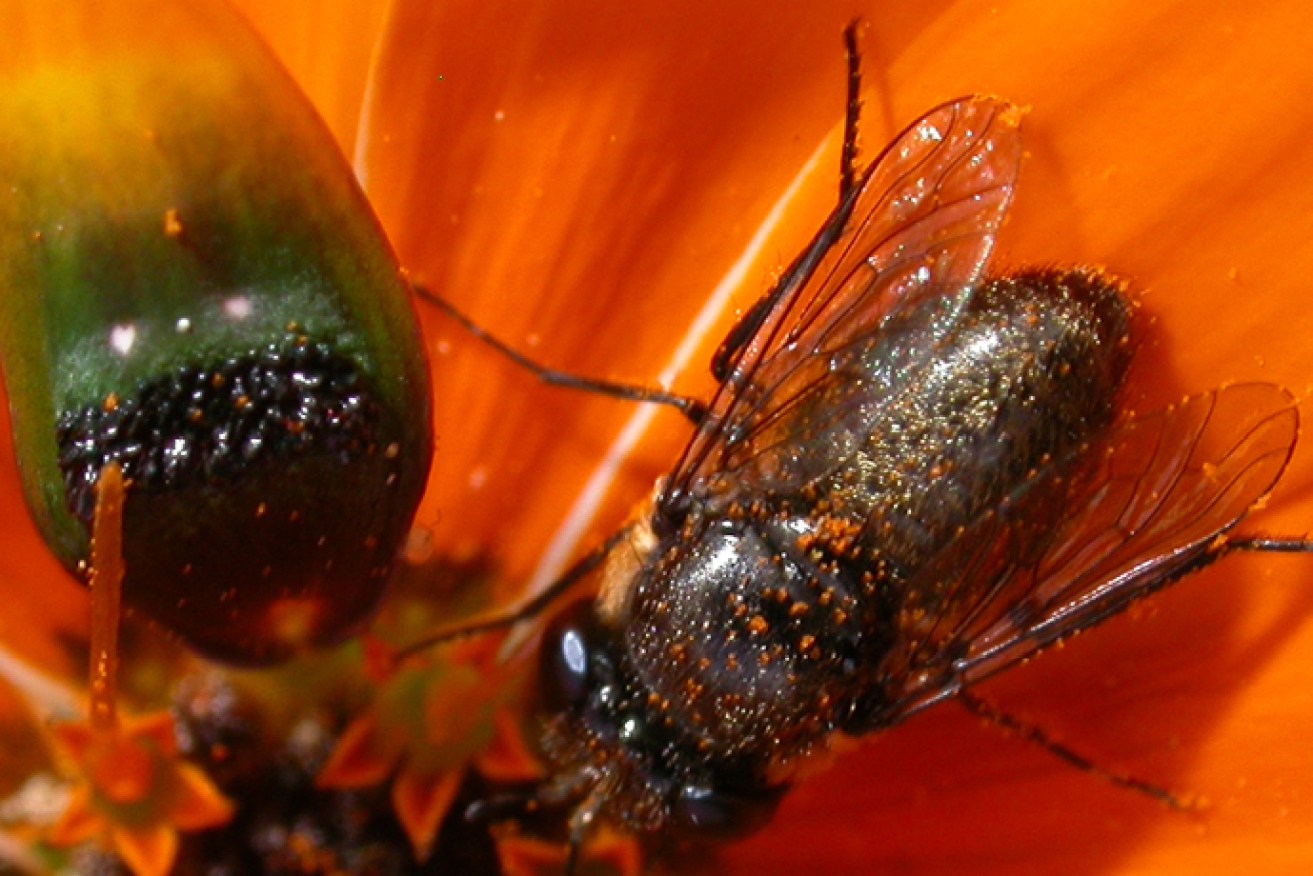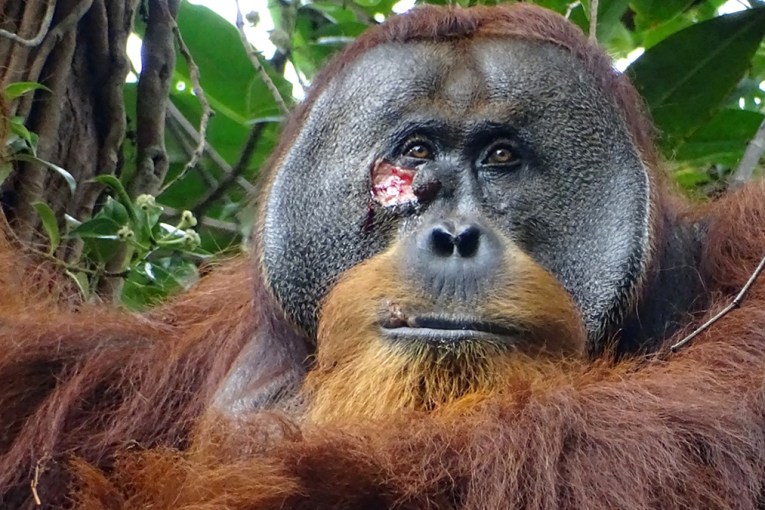The lying game: Seductive secrets of a deceptive daisy


A male bee fly is attracted to a fake female fly on the petals of a South African beetle daisy. Photo: University of Cambridge
It’s a classic love-story – the heroine who puts on a disguise to win her beau. In this instance, the South African beetle daisy uses trickery to get pollinated.
What else can a petal do? There are daisies all over the joint, all competing for a drop of pollen.
By the way, this isn’t happening in a lush grassy field.
This particular daisy, Gorteria diffusa, lives in “a harsh desert environment” with a short rainy season. The flowers need to bloom, be pollinated, and “set seed before they die”.
What to do?
The brainless and yet genius Gorteria diffusa came up with a strategy of decorating its petals with the shape and texture of a female bee fly, “complete with hairy bumps and white highlights”.
As a report from the University of Cambridge describes it: “A male fly approaches a flower, lands on top of what he thinks is a female fly, and jiggles around.
“He’s trying to mate, but it isn’t quite working. He has another go. Eventually he gives up and buzzes off, unsuccessful. The plant, meanwhile, has got what it wanted – pollen.”
The male bee fly, Megapalpus capensis, is the daisy’s main pollinator.
How does the daisy do it?
Professor Beverley Glover is director of Cambridge University Botanic Garden and senior author of a new study that explains how the furry fake flies are made.
The researchers identified three sets of genes that work together in decorating the daisy’s petals.
All three sets “have other functions in the plant: One moves iron around, one makes root hairs grow, and one controls when flowers are made”.
The study found:
- The ‘iron-moving’ genes add iron to the petal’s normally reddish-purple pigments, changing the colour to a more fly-like blue-green
- The root-hair genes make hairs expand on the petal to give texture
- And the third set of genes make the fake flies appear in apparently random positions on the petals.
Dr Glover, a professor in Cambridge’s Department of Plant Sciences, said: “This daisy didn’t evolve a new ‘make a fly’ gene. Instead it did something even cleverer – it brought together existing genes, which already do other things in different parts of the plant, to make a complicated spot on the petals that deceives male flies.”
But how does the flower know how to do it?
For the moment, this daisy gets to keep her deepest secrets.








